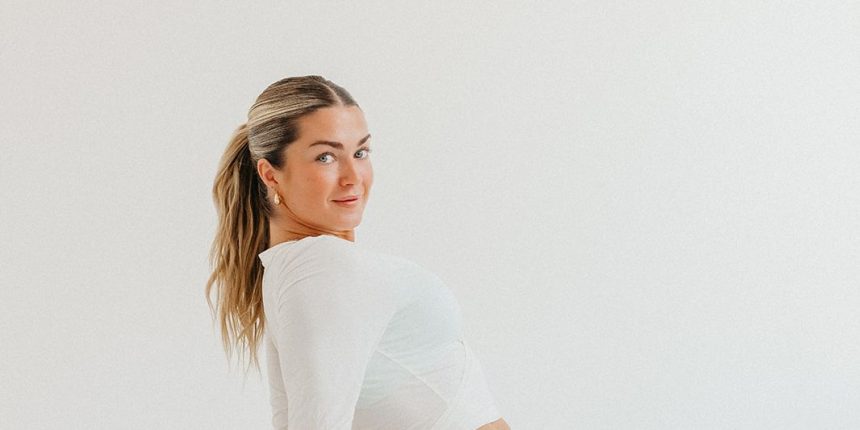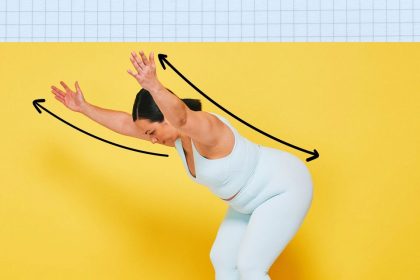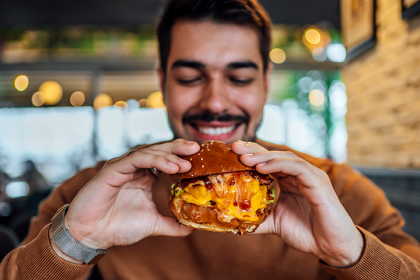Anyone plugged into Dancing With the Stars knows the name Lindsay Arnold. Arnold, who joined the cast in 2013 at the age of 19—becoming one of the youngest DWTS pros ever—announced in 2022 that she was leaving the show to focus on her growing family. Today, she shares five-year-old daughter Sage and two-year-old daughter June with her husband, Sam Cusick, and runs The Movement Club, an online fitness platform she equates to a third child.
Launched in 2020, the Movement Club offers more than 300 30-minute-or-less workout classes spanning barre, Pilates, dance cardio, resistance band training, and high-intensity interval training (HIIT)—including a new DWTS-inspired boot camp series featuring fellow pro (and Arnold’s childhood best friend) Jenna Johnson. “Obviously, people know that we were on Dancing With the Stars together, but they probably don’t know that we literally went to kindergarten together and grew up dancing together,” Arnold says. “We even talk about this in the [boot camp] videos…but it was so fun to go back to our roots.” (Johnson still competes on the show, though she and her celebrity partner, Corey Feldman, were eliminated in the second week of season 34 this September.)
To learn more about how DWTS pros train, SELF asked Arnold how she worked out during her time on the show—plus how her routine has changed now that she’s a business owner and mom of two. Here’s the lowdown.
How Arnold worked out to get in DWTS shape
For most of us, working out probably falls somewhere on the spectrum between hobby and healthy habit. But for DWTS pros—athletes, really—it’s a nonnegotiable. “Your body is literally your tool to do your job, to get things done, to perform, to do everything that you’re required to do, so fueling your body properly and making sure you’re resting your body is key,” Arnold says.
When Arnold was still competing on DWTS, she started every day with a balanced breakfast, centering food “that’s going to give you long-lasting energy throughout the day,” she says. Next, she’d spend 30 minutes stretching to loosen up her muscles. Then it was straight into rehearsals: 10 to 12 hours of dancing. Her training regimen varied based on the style of dance scheduled for the competition that week. “If it’s a jive, you’re getting straight cardio,” Arnold explains. “If it’s a slower dance, but you’re in frame, then you’re getting a lot of upper-body work.” Other than rehearsals, Arnold didn’t really do any other kind of workout in-season: “When you’re on the show, there’s no time for anything else,” she says.
That would always change when Arnold would head out on tour. (Most years, once the season wraps up, the cast performs in dozens of cities across the country.) Long stretches on the road meant she wasn’t rehearsing as much, so she’d find new ways to stay conditioned. After waking up on the tour bus each morning, she would Google the closest gym and head over to squeeze in a sweat sesh: 30 minutes of cardio on a Peloton, treadmill, or stair stepper followed by a 30-minute floor workout. Describing herself as “someone who doesn’t like to stick with the same type of movement,” Arnold says she tended to alternate between Pilates, weightlifting, and HIIT. Besides, variety can instigate more effective workouts: “If you just do the same routine over and over and over and over again, it eventually kind of loses its effect and your body gets used to it, so challenging yourself and switching up what you’re doing is so important,” she explains.
Regardless of her workout, Arnold always made a point to prioritize one particular muscle group: the core. While many people want to strengthen their core for aesthetic reasons, she says, the functional benefits are far more significant—not only for dancing, but also for pretty much every other type of movement. “Everything moves from the core, and having a strong base is going to help you with so many other things,” Arnold says. In fact, her new boot camp series features an entire segment dedicated to Johnson’s go-to core workout: “It’s stunning, especially considering she had a baby,” Arnold says. (Johnson gave birth to her son, Rome Valentin, in 2023.)
Once Arnold finished up in the gym, she would head back to the bus until the night’s performance, which provided another “two to three hours of straight cardio.” It was just “Go, go, go, go, go,” she says.
Arnold’s pregnancy and postpartum workout routine
“Getting pregnant changed everything—literally everything—in my life in such a beautiful way. But at first, it was very, very, very scary,” she says. Growing a baby takes a toll on anyone, but when your career and livelihood depend on your capacity for physical movement, it can become an even more daunting prospect. “This lifestyle that I knew—the way I moved my body, the way I expressed myself—was just drastically changing, and I was really terrified,” Arnold says.
To accommodate those changes, Arnold’s workout routine had to evolve. When she was touring before motherhood, for example, “I’d go to the gym and I’d be there as long as I wanted. I’d literally sometimes be there for two hours. Was I working hard for all of those two hours? Probably not. But I had all the time in the world,” she says. Not so much when her first daughter was born. Once that happened, “I realized, Okay, if I want to get some time in, I gotta be efficient and quick.”
These days, Arnold is in bed by 10 p.m. and wakes up when her alarm goes off at 5:45 a.m., before her daughters wake up. She strives for approximately eight hours of shut-eye. “One of the biggest things that has been a game-changer for me is putting my phone away 30 minutes before I want to fall asleep. Not touching it, not looking at it, not thinking about it,” she says. Otherwise, “your mind is being activated in a way where it’s going to be harder to settle it down after,” whether you’re casually doomscrolling or responding to work emails. Nutrition-wise, she doesn’t believe in strict diets, but she does try to adhere to a protein goal: at least 20 grams at each meal.
By 6 a.m., Arnold is in her basement home gym starting her workout. For her warmup, “I’ll either walk on an incline for 30 minutes or do my Peloton class for 30 minutes,” she says. “I always like to do that. It helps me wake up, and it gets my heart pumping a little bit.” From there, she progresses right into a Movement Club class (or tests a new one she’s planning to film for the platform). “People don’t believe me when I say I literally do my own workouts every day,” she says. Depending on when she calculates her daughters will wake up, she’ll either do a shorter, 15-minute session or a longer, 30-minute one. Finally, to wind down, she’ll head into the backyard for a 15-minute sauna session followed by a two-minute cold plunge.
Starting each day off with this process “has literally been life-changing for me,” Arnold says. (Though she notes she of course takes rest days.) “Especially since becoming a mom. I’ve found that making time for myself consistently—whether it’s five minutes to an hour, whatever it is—drastically changes my day.” Parenting is chaotic, and nothing is the same from one hour to the next, so her morning workout helps ground her to confront whatever challenges come down the line: “That’s kind of how I can take control of my day,” she says.
Marrying motherhood and movement in this way has also had another, less predictable benefit: boosting Arnold’s confidence in her body. When Arnold started having kids, she figured that her best days were behind her as far as fitness. “I really thought that it just kind of declined from there,” she says. But contrary to her expectations, that hasn’t been the case. Instead, she has found motherhood to be a newfound source of strength, confidence, and pride in her physical abilities: “I genuinely feel even better now than I did when I would say I was in my ‘prime.’”
Related:







